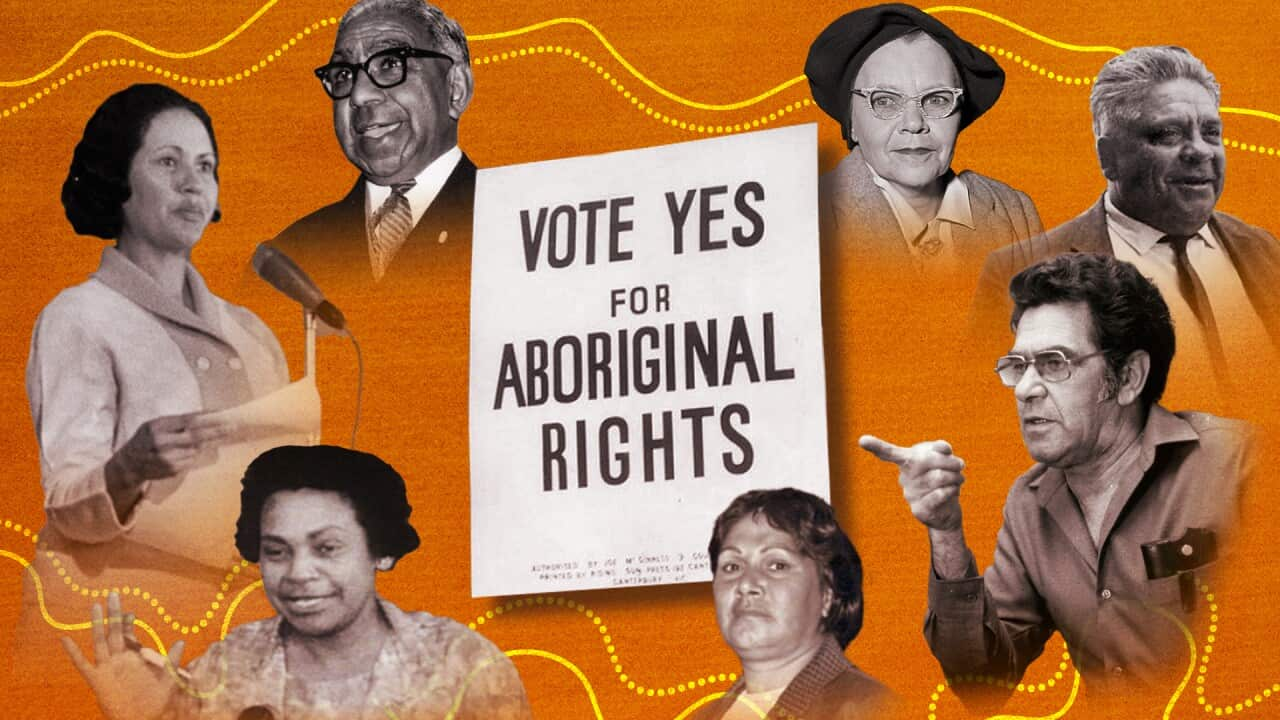Key Points
- No legal change can ever be made to the Australian constitution without the approval of the Australian people first.
- A referendum is a vote by the Australian people to approve or disapprove of a constitutional change put forth by the Government.
- For a referendum to be successful, there needs to be what is called a 'double majority'.
Sometime later this year, a referendum will be held into constitutional recognition for Aboriginal and Torres Strait Islander peoples and the establishment of an Indigenous Voice to Parliament.
Most of us know about the successful 1967 referendum when 90 per cent of the Australian population voted 'Yes' to have First Nations people included in the census and officially recognised as part of the population.
But since then, there's only been a handful of referendums and many of us have not had to vote in one. So, here's what you need to know about the process.
The basics
A referendum is a vote by the Australian people to approve or disapprove of a constitutional change put forth by the Government.
No legal change can ever be made to the Australian constitution without the approval of the Australian people first.
to change the constitution starts with a bill - a proposed law - which is presented to the Australian Parliament. If the bill is passed, it is then put to the Australian voting public to decide on the final outcome through a referendum.
Under of the constitution, the referendum must take place between 2-6 months after the bill passes in government.

Prime Minister Anthony Albanese delivered a speech to Indigenous leaders, cat the Garma Festival ahead of a referendum on an Indigenous Voice. Source: NITV
Explaining the arguments
To help the public decide and have more knowledge on what they are voting for, before a referendum takes place, members of Australian parliament will put together their arguments for and against the proposed change.
Where in the past a pamphlet would be delivered to households explaining for and against the change, the government recently updated the Referendum Act. One of the changes was an acknowledgement of the new digital communication age we live in, and the pamphlet was scrapped.
The referendum process
On the elected referendum date, voters head to the polling booths, the same as they would in a normal election. Usually these are set up in schools, churches and similar public spaces.
In this case the voting is a more simple task compared to an election, the voter will write a Yes or No on a ballot form in response to the proposed change.
As with any voting process, you first need to be registered to vote with the
The outcome
This means that 'a national majority of voters in the states and territories' voted yes,
and 'a majority of voters in a majority of the states (i.e. at least four out of six states), also voted yes.
If the outcome is a national majority of voters is yes, but it's only within one or two states, the referendum has been unsuccessful.
In Australia, there have been 19 referendums in total, with 44 changes proposed.
Only 8 changes have been agreed to by Australian voters.
On the eve of January 26 a special NITV/ SBS program Sunset Ceremony will delve into the national conversation around a Referendum and an Indigenous Voice to Parliament. From Sydney's Yurong Point, the show will be broadcast on Wednesday, January 25 at 7.30pm on NITV and SBS.



